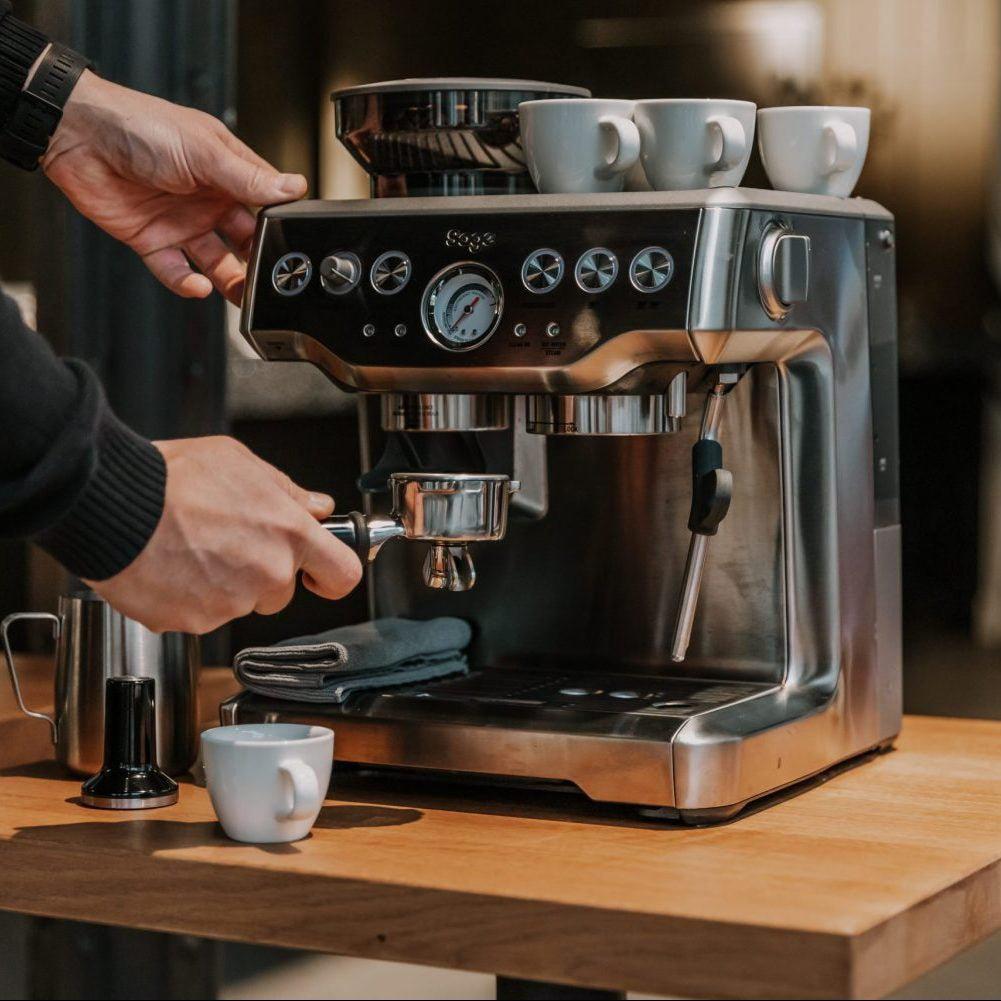As a coffee enthusiast, achieving the perfect espresso is more than a routine—it's an art. Every variable, from grind size to tamping pressure, affects your espresso's quality. Yet, one critical factor often overlooked is brew temperature. Learning how to adjust the brew temperature on your Breville (or Sage in the UK) Barista Express can significantly enhance your coffee experience. Uncover the premium brewing capabilities in our Breville Dual Boiler BES920XL review
This guide provides a clear walkthrough to modify the brew temperature on your machine. Whet her you’re fine-tuning for altitude or exploring the unique profiles of light and dark roasts, these adjustments can transform your espresso. Explore the intuitive design and features in our Breville Barista Touch Impress review

Why Brew Temperature Matters
The brew temperature significantly impacts espresso extraction. Too high a temperature results in over-extraction, yielding a bitter or burnt flavor. Conversely, a low temperature causes under-extraction, producing sour or weak shots. The ideal brewing range lies between 195°F and 205°F (90°C to 96°C), though this can vary with roast type. Compare these two top models in our Breville Barista Express Impress vs Pro review
Lighter roasts often require higher temperatures to highlight their bright, intricate notes. Meanwhile, darker roasts thrive at lower temperatures, emphasizing bold richness without excessive bitterness.
The Breville/Sage Barista Express allows you to adjust the brew temperature, enabling a personalized espresso experience tailored to your favorite beans. Find the right machine for you in our Breville Barista Pro vs Express review
Understanding the Breville/Sage Barista Express
The Barista Express is a feature-rich espresso machine equipped with a PID (Proportional-Integral-Derivative) controller. This maintains temperature stability throughout the brewing process. While the machine lacks an external temperature control dial, it includes a hidden feature for temperature adjustments.
Mastering this functionality can elevate your espresso without requiring additional tools or equipment. Learn the differences between these high-end machines in our Breville Oracle vs Oracle Touch review
Step-by-Step Instructions to Modify Brew Temperature
Prepare the Machine
Start by ensuring the machine is turned off. Press the power button to shut it down completely before proceeding with adjustments.
Access Programming Mode
To enter temperature adjustment mode:
- Hold down the "Program" button.
- While holding "Program," press the power button to turn the machine on.
- Continue holding "Program" until the control panel lights begin flashing, indicating programming mode.
Adjust the Temperature Settings
Once in programming mode, use these buttons to modify the temperature:
- Single Shot Button: Decreases the temperature by 2°F (1°C).
- Double Shot Button: Increases the temperature by 2°F (1°C).
- Filter Size Button: Resets the temperature to the default setting of 200°F (93°C).
The LED indicators will reflect your selected setting:
- Both 1 Cup and 2 Cup lights on: Default temperature (200°F or 93°C).
- 1 Cup light only: Lower temperature (198°F or 92°C).
- 2 Cup light only: Higher temperature (202°F or 94°C).
Fine-Tune the Temperature
Use the "Single Shot" or "Double Shot" button to adjust the temperature to your preference. This setting should align with your coffee beans and flavor goals:
- Higher temperatures bring out the vibrant, fruity notes of light roasts.
- Lower temperatures enhance the sweetness and reduce bitterness in dark roasts.
Save Your Adjustments
Once satisfied, press the "Program" button again to save the new settings and exit programming mode. The machine will briefly turn off and restart with the updated temperature.
Test and Refine
Pull a shot to test the adjustments. Pay attention to the flavor and extraction time. If necessary, refine your settings further by tweaking the temperature, grind size, or tamping pressure.
Troubleshooting Common Issues
While adjusting the brew temperature is straightforward, you might encounter a few hiccups. Here are solutions to common problems:
- Changes Not Applying: Ensure the machine is in programming mode (indicated by flashing lights) before attempting adjustments.
- Persistent Off-Flavors: Consider refining other factors like grind size, tamp pressure, or bean freshness alongside temperature changes.
- Frequent Adjustments Needed: Use temperature changes strategically, particularly when switching between different bean types. Light roasts often need higher settings, while dark roasts benefit from lower ones.

Conclusion: Unlocking the Full Potential of Your Espresso
Fine-tuning the brew temperature on your Breville/Sage Barista Express is a game-changer. These small adjustments can bring out the nuanced flavors of your beans, elevating your espresso to new heights.
Through my own experimentation, I’ve discovered how transformative this feature can be. If you’ve been sticking to default settings, don’t hesitate to explore the temperature adjustment options. Your espresso—and your taste buds—will thank you!
